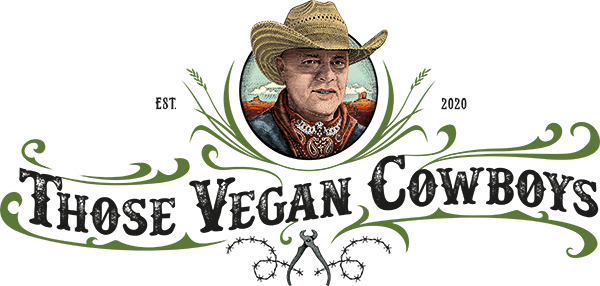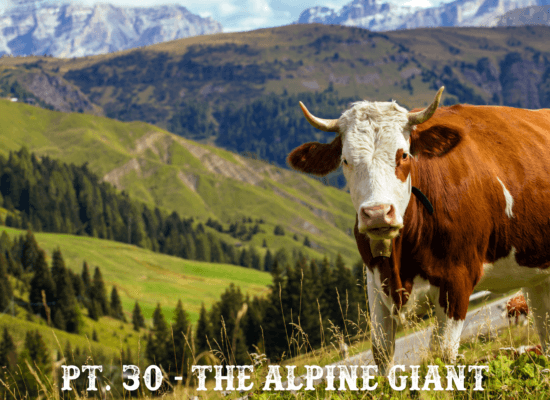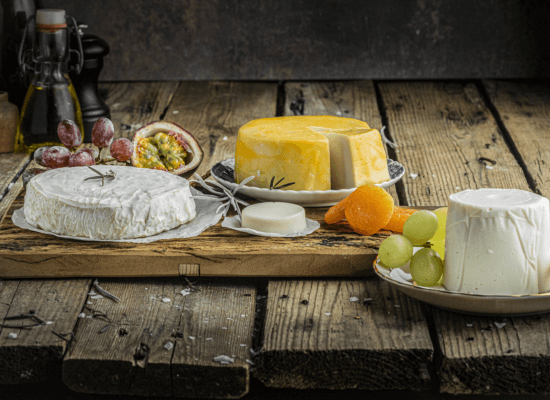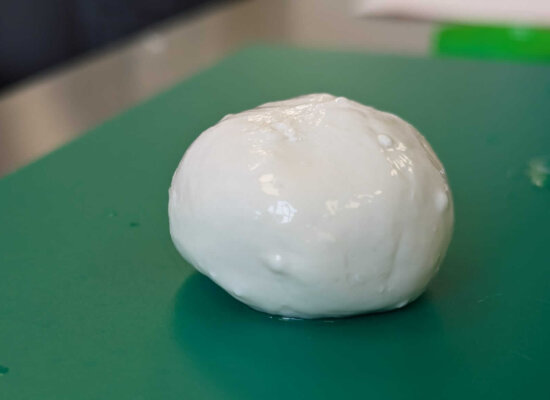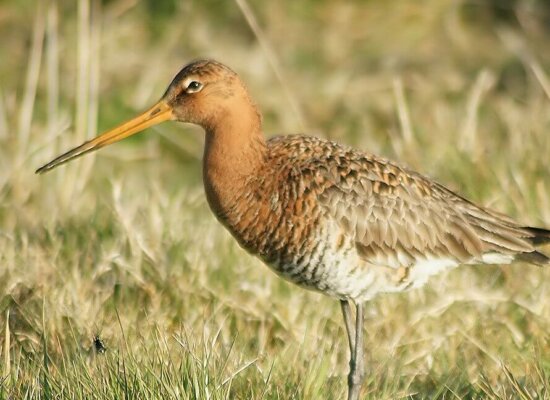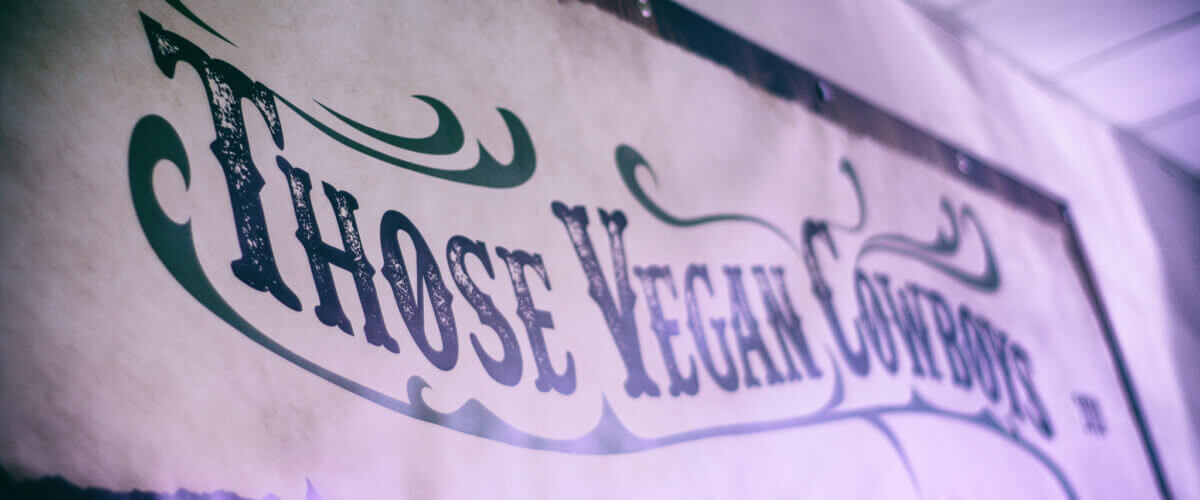
Pt 11: Going down at the fabled Calamity Mine
I sat down by the campfire with Kathleen ‘The Sticky Belgian’ Piens one crisp autumn night as she patiently explained to me every detail of the operation. This is the second part of what she told me. Please read the introduction of A lay of the land.
At The Cattle Drive, that very same team of fermentation specialists continues growing the most promising strains of yeast and fungus, using the methods that were developed in The Open Range. Alongside a row of 15L vats stands our prize cow, a larger model that we call a pilot fermentor. At a whopping size of 300L, this fermentor represents Margaret, our stainless steel lady. Inside our Margaret, the micro-organisms will grow, feeding on grass-derived sugars and producing the dairy proteins that we need to make the milk and cheese we so desire. After this process of growth, fermentation and production is concluded, we’re left with a soup of different components; a so-called fermentation broth. Through centrifugation and different methods of filtration, the relevant proteins are separated from this broth before they move on to the next stage in our process…
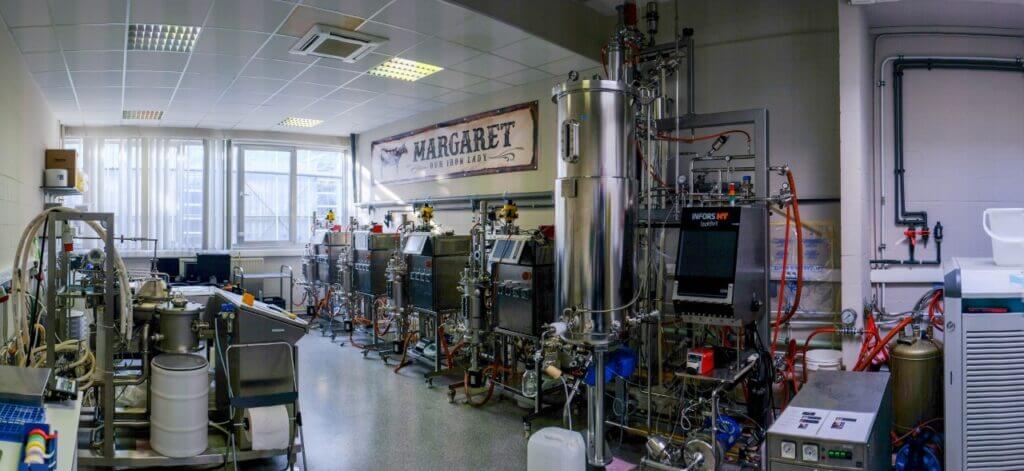
…at the fabled Calamity Mine! This lab is all about the purification of proteins. The liquid medium that’s sent on from The Cattle Drive is processed here, and stripped down to its very essence. The skilled team that works this mine is able to use the characteristics of each type of protein in order to develop a purification procedure that’s tailor-made for its specific attributes. The medium containing our dairy proteins is submitted to this procedure until all the impurities and by-products are separated, leaving only a pure batch of protein, ready for analysis. In much the same way, our team at the Calamity Mine can also extract the pure proteins from a bottle of regular old cow’s milk. Doing so gives us a frame of reference, a blueprint if you will, to which we can compare the proteins that are produced in our own fermentation processes. After all, we still follow nature’s design, even if we use cutting-edge technology to do so. When all is said and done, the proteins that are isolated here will be joined together to form that block of cheese that we’re dreaming of, developed completely independently from any living animal. But before we get to that point there’s still lots of work to be done, and the protein that was painstakingly extracted in the Calamity Mine must be subjected to some harsh scrutiny and analysis indeed.
The task of probing those proteins and unravelling their secrets falls to a group of analytical experts. They work to reveal the unique characteristics of milk proteins, and investigate how those characteristics can be applied to form larger structures. Their area of expertise is still shrouded in mystery, which is why we came to calling this part of the operation Unknown Territory. These uncharted lands are a place of many questions, and the task of exploration is no easy one. In here, the protein batches that come from the Calamity Mine, but also smaller samples from The Open Range and The Cattle Drive, are rigorously analyzed. The results that come back from here function as important feedback for those earlier stages of the research process.
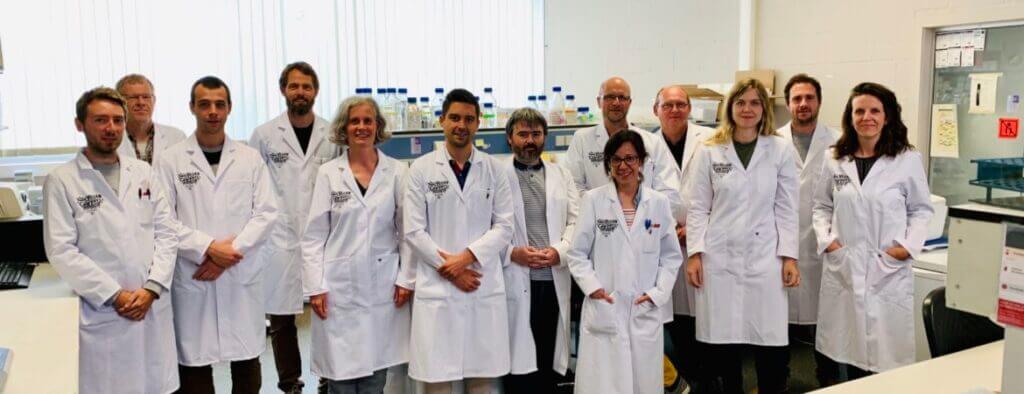
The Alchemist
The most important question, though, lies in the matter of micelle formation. You see, caseins are a very special group of proteins, the ones that are essential to making milk and cheese. These caseins have a unique way of interacting with one another, forming clusters that we call micelles. Being able to set in motion the formation of these micelles is one of the biggest hurdles in the journey towards our golden cheese, though our team is booking progress with each week that passes. Before long, they’ll have mapped this unknown territory, decrypted the enigma of micelle formation, and we’ll be well on our way to a true cheese making process. Naturally, any large research operation is dependent on a few vital amenities, resources that are used by any and all of our laborious laborants. Chief amongst these is our Drugstore, the place where all the necessary chemicals, solutions and mixtures are prepared and weighed. It is vital for all the different parts of the process I’ve described to you so far that this is done with the utmost precision and care, which is why the goings on in this room are under close supervision of one man, colloquially known as The Alchemist.
Barn
And then of course, any big ranch needs a good barn. This is where we keep all our equipment, from test tube to gloves. Here, we also keep all of our freezers, which contain every single modified strain and purified casein that the lab has produced to date. They function somewhat as a library; a collection and record of all the steps we’ve taken in our research so far, and all the milestones passed. Even though we still have plenty of room left, they are filling up more and more as the weeks turn to months, and the season slowly turns as frigid as the content of our freezers. Before long, who knows how many wonderful and unique strains we may have hoarded up in here, always ready and awaiting further study and experimentation.
So there you have it folks, the inner workings of our good ranch in a nutshell. Although there’s a lot more to it than I could describe in a few short pages, this is how our research is slowly but surely paving the road towards our golden goal, a true cheese eldorado. Though there’s mysteries abound in this venture of ours, let it never be said that our work and achievements at the lab are kept a mystery from others. After all, the fruits of this research are meant for all, and in the end the final prize will be enjoyed by all. On that note, I hope you enjoyed this glimpse into our journey towards a microbiological masterpiece, and trust to see you next time for more stories and chronicles, tales and revelations, of Those Vegan Cowboys.
